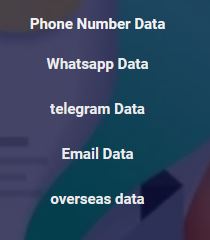Framing Success: The Executive Perspective
Executives are focused on the big picture—revenue growth, market share, and long-term value creation. When presenting ABM metrics to executives, it's essential to frame them within these broader business objectives. This means going beyond vanity metrics like clicks or impressions and zeroing in on the KPIs that directly correlate with business outcomes.
The Metrics That Matter: A Closer Look
Revenue Contribution
Why It Matters: Revenue is the ultimate indicator new zealand whatsapp number data 5 million of ABM success. Executives want to see a direct link between your ABM efforts and the company’s bottom line.
How to Track: Focus on metrics like revenue generated from targeted accounts, average deal size, and revenue growth rate. These figures provide a clear picture of ABM’s impact on the company’s financial health.
Pipeline Velocity
Why It Matters: Speed is crucial in business. Pipeline velocity measures how quickly leads move through your sales funnel, from initial engagement to closed deal.
How to Track: Calculate the average time it takes for targeted accounts to move through each stage of the sales process. A faster pipeline often indicates a more efficient and effective ABM strategy.
Account Penetration
Why It Matters: Deepening relationships with key accounts is a core goal of ABM. Account penetration measures the extent to which you’ve engaged and influenced different stakeholders within a target account.
How to Track: Monitor the number of engaged contacts, meetings, and interactions within each targeted account. High account penetration signals strong engagement and a higher likelihood of closing deals.
Customer Lifetime Value (CLTV)

Why It Matters: CLTV is a forward-looking metric that helps executives understand the long-term value generated by ABM efforts.
How to Track: Analyze the projected revenue from an account over its entire relationship with your company. A rising CLTV suggests that ABM is effectively driving not only initial sales but also ongoing customer loyalty and upsell opportunities.
Engagement Quality
Why It Matters: Quality trumps quantity in ABM. Executives need assurance that the engagement your ABM efforts generate is meaningful and likely to lead to conversion.
How to Track: Focus on metrics such as engagement score, which combines data points like content downloads, email opens, meeting requests, and direct responses from target accounts. A high engagement score reflects the effectiveness of your ABM content and tactics.
Reporting with Precision: Crafting the Narrative
When reporting ABM metrics to executives, clarity and conciseness are key. Start with the headline metrics that align most closely with their priorities—revenue, pipeline velocity, and account penetration. Present these figures in a straightforward, visual format, such as dashboards or summary reports, that allow executives to quickly grasp the key insights.
Next, delve into the details, but only as much as necessary. Offer brief explanations of how each metric ties back to the overall business strategy. Avoid overwhelming executives with too much data; instead, focus on telling a compelling story that connects the dots between your ABM activities and the company’s strategic goals.
